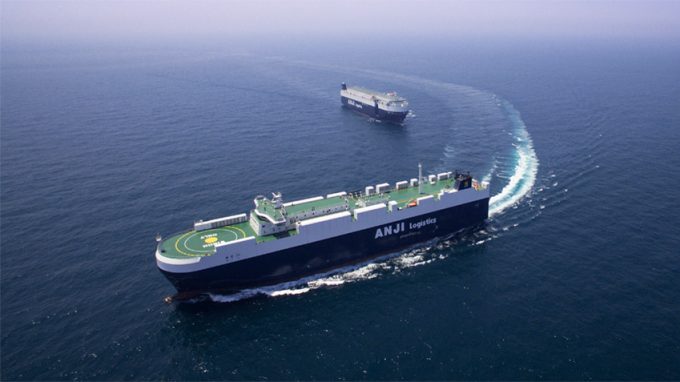'Usual' shortage of seasonal workers creating delays on Europe's waterways
Shortages of seasonal workers have prompted delays across Europe’s inland waterways, leaving many in the ...
TFII: SOLID AS USUALMAERSK: WEAKENINGF: FALLING OFF A CLIFFAAPL: 'BOTTLENECK IN MAINLAND CHINA'AAPL: CHINA TRENDSDHL: GROWTH CAPEXR: ANOTHER SOLID DELIVERYMFT: HERE COMES THE FALLDSV: LOOK AT SCHENKER PERFORMANCEUPS: A WAVE OF DOWNGRADES DSV: BARGAIN BINKNX: EARNINGS OUTODFL: RISING AND FALLING AND THEN RISING
TFII: SOLID AS USUALMAERSK: WEAKENINGF: FALLING OFF A CLIFFAAPL: 'BOTTLENECK IN MAINLAND CHINA'AAPL: CHINA TRENDSDHL: GROWTH CAPEXR: ANOTHER SOLID DELIVERYMFT: HERE COMES THE FALLDSV: LOOK AT SCHENKER PERFORMANCEUPS: A WAVE OF DOWNGRADES DSV: BARGAIN BINKNX: EARNINGS OUTODFL: RISING AND FALLING AND THEN RISING

The ro-ro market is continuing to boom, with demand remaining high and vessel space at a premium boosting rates, while port operators in Europe are refusing to take more vehicles as storage reaches capacity.
According to a Loadstar source, storage is overwhelmed by the scale of imports at the port of Antwerp-Bruges.
“We’ve resorted to moving cars in containers,” the source said.
Other ports are also taking measures as port storage is overwhelmed by the scale of imports into Europe, according to the source.
In an effort to meet the increased demand – expected to be sustained as electric vehicles replace internal combustion engines –carriers are busy ordering new vessels.
SAIC Anji, the logistics unit of China’s largest carmaker, SAIC, has expanded its pure car and truck carrier (PCTC) orderbook with an order for four 9,000 car-equivalent unit (ceu), dual-fuel methanol-powered vessels at China Merchants Jinling Shipyard (Nanjing), following orders for three similar ships contracted at Jiangnan Shipyard on Friday.
The cost of each ship, specially designed for SAIC Anji, is estimated at $96m. They will be China-flagged and dual-classed by DNV and China Classification Society.
SAIC Anji is now China’s largest automotive logistics provider, with a network connecting more than 100 countries. Last year, it formed Guangzhou Ocean Car Carrier (GOCC) with Cosco and SIPG Logistics, a unit of Shanghai International Port Group.
GOCC has 24 PCTCs on order for delivery between 2024 and 2026, in addition to the long-term chartering of six 7,500 ceu vessels Japanese owner Santoku Senpaku is building at Fujian Shipbuilding.
The newbuildings contracted over the May Day weekend add to five LNG-fuelled PCTCs ordered at Jiangnan last year.
SAIC Anji ordered three 7,800 ceu vessels and two 7,600 ceu at Jiangnan to be delivered in 2024 and 2025, estimated at $85m each.
Also designed by SDARI, these ships are to be delivered in 2024 and 2025, will and have WinGD dual-fuel engines with type-C LNG tanks.
In 2022, China exported 3.11 million cars, surpassing Germany to become the world’s second-largest exporter after Japan. However, there are concerns that the shortage of transport capacity and soaring PCTC charter rates could hobble China’s car exports. Last month, shipbroker Clarksons noted that PCTC charter rates had reached a record high of $110,000 a day.
Last year, 90 PCTCs of 560,000 ceu were ordered, nearly tripling the 38 commissioned in 2021. During the height of the pandemic, in 2020, just four were ordered.
The surge in Chinese car exports, 1.07 million vehicles in Q1 23, up 58% year on year, is supporting PCTC demand.
Comment on this article